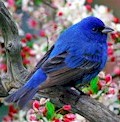Wild bird feeding is a very engaging and entertaining winter pastime. It also is very beneficial for the birds' health. The cold weather months make it difficult for wild birds to find food. Backyard bird feeders provide much needed assistance in this regard. Three specific items, if properly maintained, can optimize your wild bird feeding experience, ensuring that many different species of birds visit your backyard feeders all winter long. First, of course, you need one or more bird feeders; second, you need a birdbath; and third, often overlooked, you should put up a winter roosting box.
Bird FeedersBird feeders come in all shapes and sizes, often accommodating the different ways birds eat. For example, juncos and sparrows forage on the ground, so platform feeders easily meet their needs. Meanwhile, finches and chickadees are drawn to tube bird feeders filled with seed.
If you place a few bird feeders of various styles and use a combination of seed, fruit, and nutmeats, you can greatly increase the number and variety of visiting birds. In fact, adding to the variety of food you provide for the birds will more than proportionately add to the variety of birds at your bird feeders.
Bird BathsA water feature, like a birdbath, has a magnetic effect on birds, as long as you pay attention to a few details.
![]() Change the water every few days to keep it clean and healthy.
Change the water every few days to keep it clean and healthy.
![]() Add a drip or mister to your birdbath to maximize your bird traffic - moving water is far more effective at attracting wild birds than still water.
Add a drip or mister to your birdbath to maximize your bird traffic - moving water is far more effective at attracting wild birds than still water.
![]() In the winter, you will need to keep the water from freezing. A submersible birdbath heater will keep the birds coming, even in snowy weather.
In the winter, you will need to keep the water from freezing. A submersible birdbath heater will keep the birds coming, even in snowy weather.
The birdwatcher who can provide a bit of protection from the cold winter nights will likely be rewarded with a greater variety and frequency of birds at their feeders. Wild bird roosting boxes are built to accommodate several individuals. The lucky birds, now sheltered from wind and rain, can huddle together for warmth. Imagine a clean, fully stocked bird feeder just a few yards away from the roosting box. That would be a very busy and entertaining place in the winter.
Place your roosting box on a metal or wooden post, on a tree, or on the side of a building. Make sure it is facing away from prevailing winds. If you can mount the roosting box so that it faces south, it will get the most warmth from the sun in winter.
Whether you purchase a wild bird roosting box or you make one of your own, make sure it meets these criteria:
![]() The roosting box, unlike a nest box, should not have ventilation or drainage holes - the idea is to keep heat from escaping.
The roosting box, unlike a nest box, should not have ventilation or drainage holes - the idea is to keep heat from escaping.
![]() Roosting boxes built in a horizontal orientation may have a few perches that extend from one side of the box to the other, while vertical roosting boxes will likely have several shorter perches that are mounted in a stagger pattern. Either way, there must be plenty of room for several birds.
Roosting boxes built in a horizontal orientation may have a few perches that extend from one side of the box to the other, while vertical roosting boxes will likely have several shorter perches that are mounted in a stagger pattern. Either way, there must be plenty of room for several birds.
![]() The entrance hole should be located at the bottom of the roosting box. Heat rises, so an entrance hole placed too high will cause the roosting box to lose heat.
The entrance hole should be located at the bottom of the roosting box. Heat rises, so an entrance hole placed too high will cause the roosting box to lose heat.
![]() The roosting box needs to be accessible for cleaning purposes. The top or the front of the box should be hinged for easy opening.
The roosting box needs to be accessible for cleaning purposes. The top or the front of the box should be hinged for easy opening.
One or more bird feeders, a birdbath with a drip or mister, and a nearby roosting box are the makings of a successful winter of wild bird feeding. Go put your triple play together today, and enjoy the results. Happy birding!
